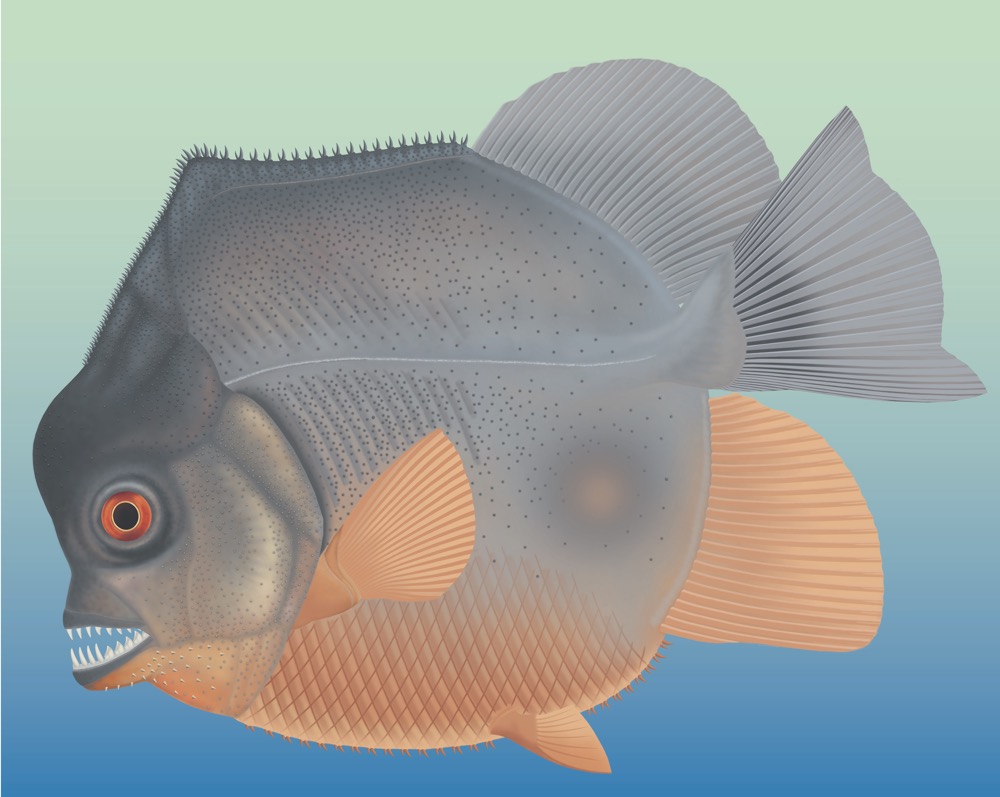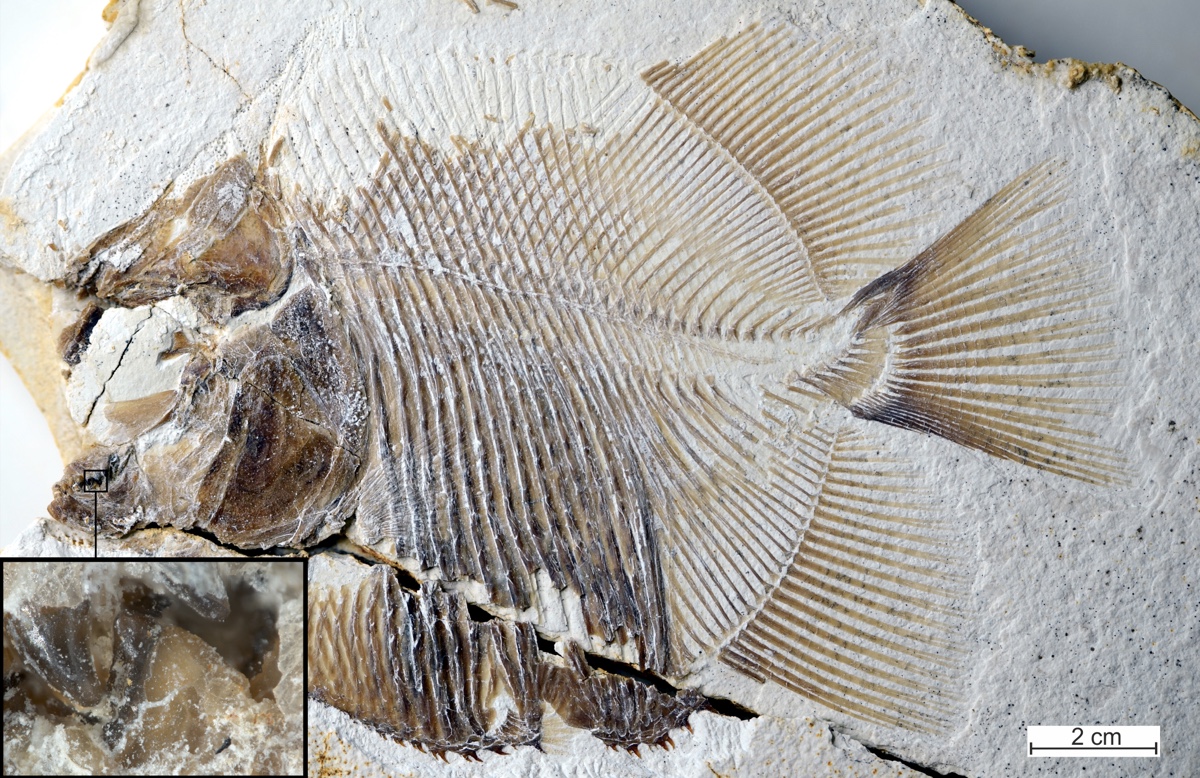Dinosaur-Era Super-Piranha Terrorized Jurassic Seas

A piranha-like fish with a mouth full of pointy teeth (some even jutting down from the roof of its mouth) once swam the Jurassic seas, ripping flesh or even fins from the bodies of other aquatic creatures.
That was 152 million years ago, a new study of a fossil of the creature found in Germany revealed. At that time, pterodactyls flew in the skies and stegosaurs and brontosaurs walked the Earth. The scientists discovered the specimen in 2016 in the same limestone deposits in the south German countryside that yielded fossils of Archaeopteryx, long considered the first known bird.
Back when this fish lived, the area in which it swam "was occupied by a shallow tropical sea dotted with small, sunbathed islands, covered by a probably sparse vegetation of ferns and cycads on which exotic animals lived — numerous insects, lizards, small dinosaurs and the early bird Archaeopteryx," study lead author Martina Kölbl-Ebert, a vertebrate paleontologist and director of the Jura Museum in Eichstätt, Germany, told Live Science. "In the sea, there were sponge reefs as well as small coral reefs. There were numerous invertebrate species, such as crustaceans, but also many different fish and marine reptiles." [Photos: The Freakiest-Looking Fish]
After the scientists carefully freed the 2.8-inch-long (7.1 centimeters) fossil from its rocky prison with the help of scalpels, needles and a microscope, they discovered that it had long, pointed teeth in the front of both the upper and lower jaws. These teeth also appeared on the outside of the vomer, a bone forming the roof of the mouth. In addition, triangular teeth with serrated cutting edges jutted from the bones that lay along the side of the lower jaw.

The pattern and shape of the teeth and jaws suggest that this fish was equipped to slice flesh or fins in a strikingly similar manner to modern piranhas, the study said. The researchers named this fish Piranhamesodon pinnatomus, with Piranhamesodon referring to the creature's piranha-like nature and pinnatomus meaning "fin cutter."
The paleontologists also discovered fossils of fish that Piranhamesodon may have hunted; these animals had chunks of tissue missing from their fins.
"This is an amazing parallel with modern piranhas, which feed predominantly not on flesh but [on] the fins of other fishes," study co-author David Bellwood, at James Cook University in Australia, said in a statement. "It's a remarkably smart move, as fins regrow, [making them] a neat renewable resource. Feed on a fish, and it is dead; nibble its fins, and you have food for the future."
Sign up for the Live Science daily newsletter now
Get the world’s most fascinating discoveries delivered straight to your inbox.
Previously, bony fish — fish whose skeletons are made of bone — were not known to bite chunks of flesh or fins from prey until a much later period on the evolutionary timeline, Kölbl-Ebert said. Instead, they were thought to either crunch on invertebrates or swallow their prey whole. (Sharks were long known to bite chunks of flesh from prey, but their skeletons are made of cartilage, not bone.)
"The new[found] fish is a most interesting example for convergent evolution, evolving a — for bony fish then — completely new way of life," Kölbl-Ebert said. "The fish represents the earliest record of fin feeding in bony fishes." (Convergent evolution is when two different animals evolve in similar ways to solve similar problems, such as how dolphins and ancient marine reptiles known as ichthyosaurs had similar body shapes to help them swim quickly in the water.)
Piranhamesodon belongs to a group of fish named the pycnodontids. "Normally, all the fish in this fish group have grasping teeth in the front and button-like teeth in the back, suitable for crushing marine snails, sea urchins or other shelly organisms," Kölbl-Ebert said. "But this one had daggers and scissors in the mouth. It was a veritable wolf in sheepskin."
This discovery "highlights the sheer evolutionary flexibility of fishes," Kölbl-Ebert said. "If a fish with highly specialized crushing teeth can develop highly specialized cutting teeth, what is next? It is a staggering example of evolutionary versatility and opportunism."
The fossil is now on display in the Jura Museum in Germany. The scientists detailed their findings online Oct. 18 in the journal Current Biology.
Originally published on Live Science.











